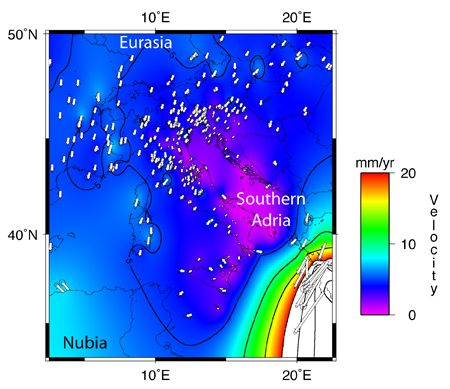Active Tectonics of Adria and the Modern Geodynamic Setting of the Eurasia-Nubia Plate Boundary Zone
By:
Rick Bennett
Department of Geosciences
University of Arizona
When: |
Friday, February 26, 2010, 10:30 a.m. to 11:30 a.m. |
Where: |
Seminar Conference Room, 10100 Burnet Road, Bldg 196-ROC, Austin, Texas 78758 |
Host: |
Luc Lavier, UTIG |
Abstract
The wide variety of observed upper plate deformation styles, slab dips, seismic coupling, and other first order characteristics of convergent plate margins may be understood in terms of the motions of trenches ("rollback") and overriding plates ("retreat") relative to the mantle. However, due to convection, it is unlikely that an intrinsic or unique mantle fixed reference frame exists, hampering a global resolution of the relative importance of these processes. Active tectonics in the central Mediterranean region may provide an exceptional opportunity to investigate this issue.
New high-precision GPS measurements of crustal velocity from a very dense network of stations within this plate boundary zone are revealing a complex pattern of present-day deformation that is not everywhere simply related to convergence of the major bounding plates, namely Nubia and Eurasia. In particular, GPS velocities representing the margins of the Adriatic Sea show present-day crustal velocities relative to stable Eurasia that are systematically oriented toward the northeast, at high angle to northwest-directed Nubia-Eurasia relative plate motion.

The differential motion of Adria may be interpreted as a result of slab entrainment in the shallow asthenosphere, with implications for asthenospheric flow pattern and subduction dynamics in the central Mediterranean region. In this talk, I will present new GPS velocity results for the central Mediterranean region. These data form the basis for an investigation of circum-Adria kinematics relative to plate fixed and mantle-fixed (e.g., hotspot and other) frames of reference, re-evaluation of modern Adriaís kinematic independence from Nubia, consideration of the possible forces responsible for Adria-Nubia relative motion, and the relative importance of modern slab rollback and upper plate retreat.




